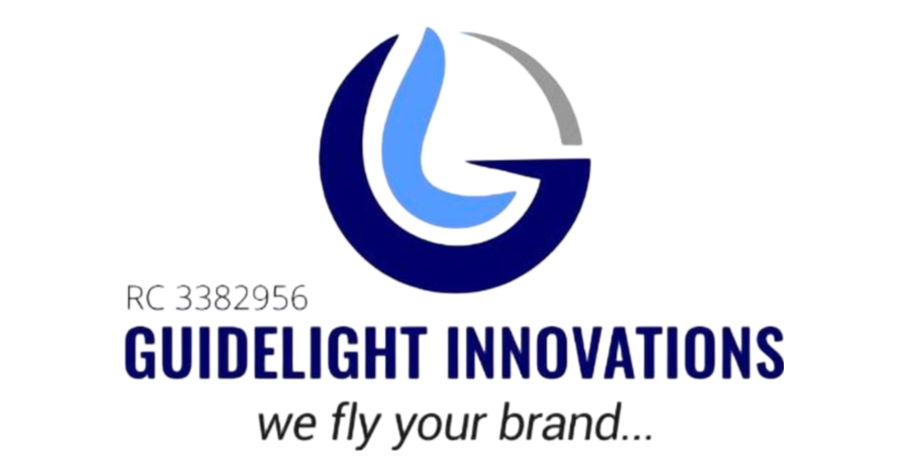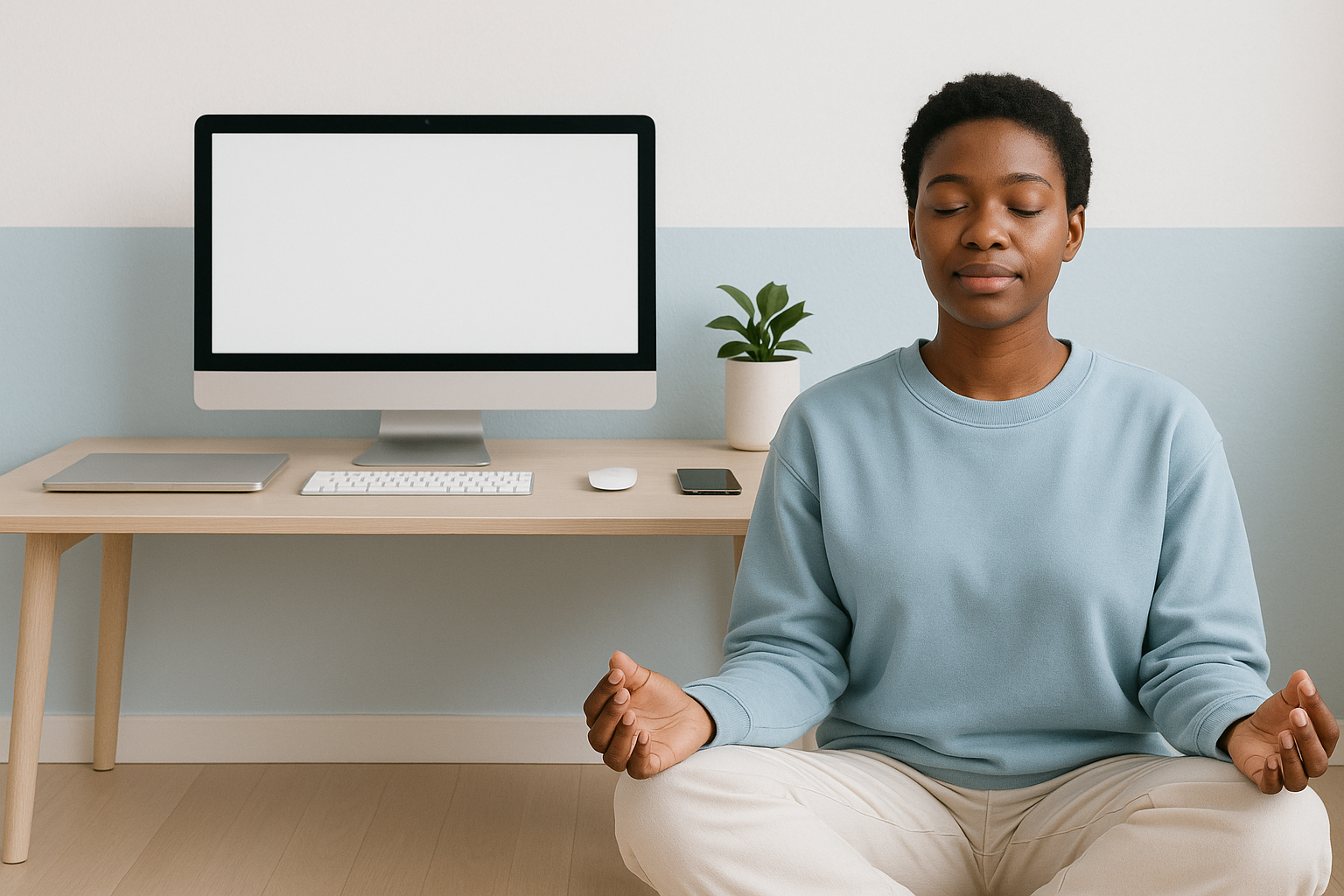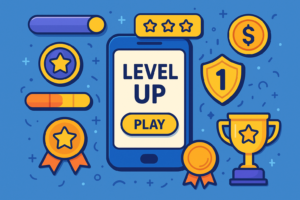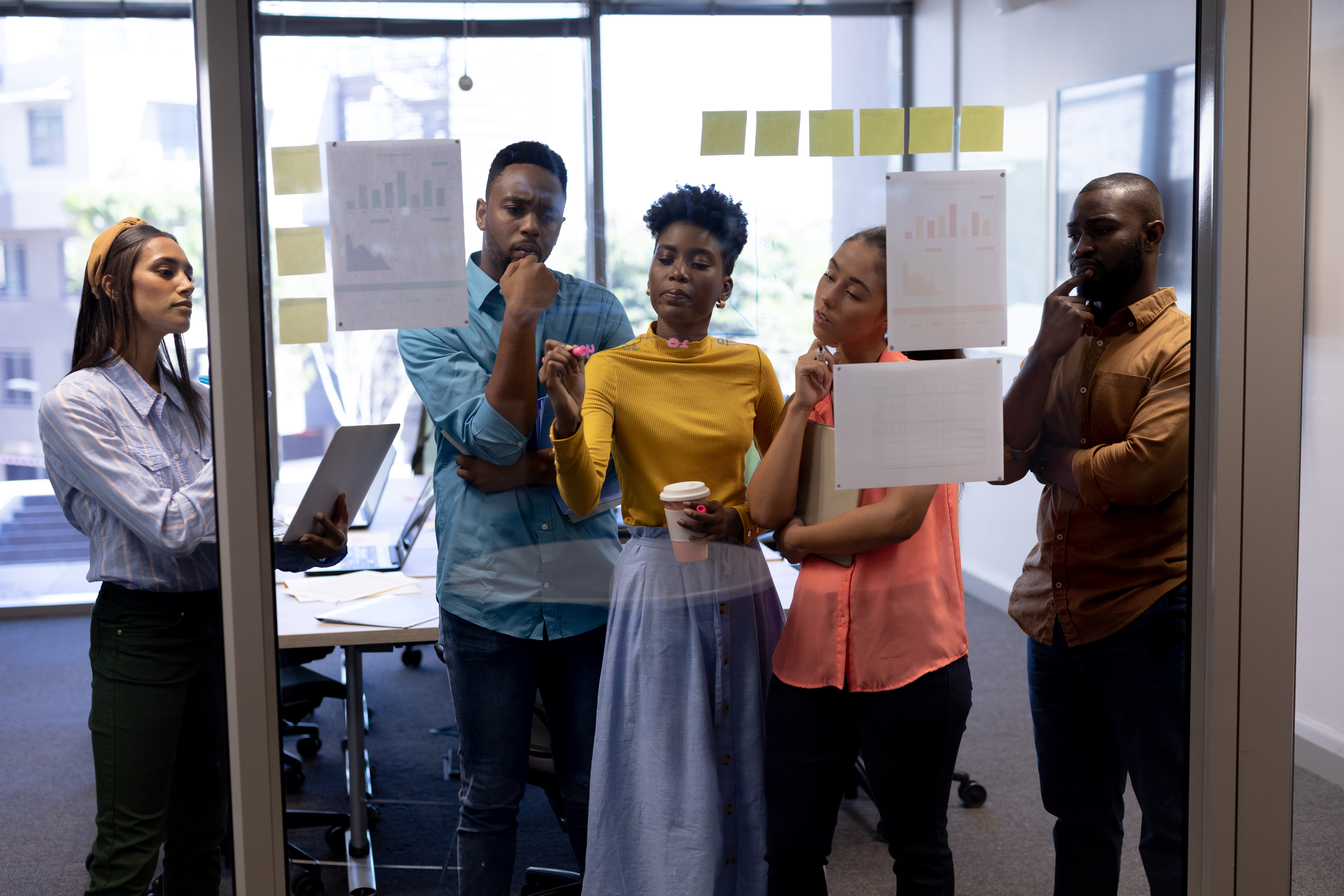Take a moment and count how many times you’ve checked your phone today. How many browser tabs do you currently have open? When was the last time you went an entire day without scrolling through social media? If you’re like most people, the answers to these questions might make you uncomfortable.
We’re living in an age of digital abundance. We have instant access to unlimited information, entertainment, and connection. Our devices promise productivity, efficiency, and the ability to stay connected with everyone, everywhere, all the time. Yet despite—or perhaps because of—this abundance, many of us feel more distracted, anxious, and overwhelmed than ever before.
This is where digital minimalism comes in. It’s not about abandoning technology or returning to a pre-internet era. Instead, it’s about being intentional with your digital life, curating your online presence and habits to support your goals and wellbeing rather than undermining them. In this comprehensive guide, we’ll explore why digital decluttering matters, how our current digital habits affect us, and practical strategies for reclaiming your attention, time, and mental space.
The State of Our Digital Lives
Let’s start with some sobering statistics. According to recent research, the average person spends over seven hours per day on screens, not including work-related use. We check our phones an average of 96 times per day—that’s once every ten minutes during waking hours. Studies from Harvard Business Review show that knowledge workers check email approximately 36 times per hour and take an average of 16 minutes to refocus after handling an incoming email.
Social media usage has reached unprecedented levels. The average person now spends over two and a half hours daily on social platforms, which adds up to more than 38 days per year scrolling through feeds. We’re exposed to more information in a single day than our ancestors encountered in their entire lifetimes. Our brains, which evolved in an environment of information scarcity, are now drowning in a deluge of digital stimulation.
The consequences of this digital saturation are becoming increasingly clear. Mental health professionals report rising rates of anxiety, depression, and attention disorders, particularly among young people who’ve grown up immersed in digital culture. Sleep quality has declined as blue light exposure and late-night scrolling disrupt our circadian rhythms. Our ability to focus deeply on complex tasks—what author Cal Newport calls “deep work”—is eroding as we train our brains to expect constant stimulation and interruption.
Perhaps most concerning is the erosion of our most valuable resource: attention. In an economy where attention is the product being sold to advertisers, tech companies have invested billions in making their platforms as addictive as possible. Former Silicon Valley insiders have revealed the deliberate use of psychological manipulation techniques—intermittent variable rewards, infinite scroll, auto-play features, notification badges—all designed to keep us engaged for as long as possible.
Understanding Digital Minimalism
Digital minimalism, a philosophy articulated most comprehensively by computer science professor Cal Newport, offers a counterbalance to our current state of digital maximalism. At its core, digital minimalism is the belief that less is often more when it comes to technology use. It’s about being selective, intentional, and purposeful with the digital tools and platforms you allow into your life.
The philosophy rests on three key principles. First, clutter is costly. Every app, subscription, notification, and digital commitment you maintain has a cost—not just in money, but in attention, time, and mental energy. Like physical clutter, digital clutter creates a low-grade stress that accumulates over time. The minimalist approach recognizes that these costs often outweigh the benefits, even when each individual tool seems harmless.
Second, optimization is important. It’s not enough to simply identify valuable technologies—you need to use them in ways that maximize their benefits while minimizing their harms. Having a smartphone isn’t inherently good or bad; what matters is how you’ve configured it, when you use it, and what role it plays in your life. A digital minimalist doesn’t just adopt technology; they optimize its implementation.
Third, intentionality is satisfying. There’s deep satisfaction in being deliberate about your choices rather than drifting along with defaults and algorithms. When you consciously decide which technologies deserve your attention and how you’ll use them, you reclaim agency over your life. This intentionality itself becomes a source of fulfillment and self-respect.
Digital minimalism isn’t about completely rejecting technology or returning to an analog existence. It’s about reversing the default. Instead of starting with all available technologies and occasionally removing the worst offenders, start with nothing and carefully add back only what truly serves your values and goals. It’s about being a technological omnivore rather than a digital glutton.
The Hidden Costs of Digital Clutter
Before we can effectively declutter, we need to understand what we’re losing to digital excess. The costs are often subtle and cumulative, making them easy to overlook until they’ve significantly impacted your quality of life.
Fragmented attention is perhaps the most insidious cost. Research by Microsoft found that after being interrupted, it takes an average of 23 minutes to return to the original task with full focus. When you’re checking your phone every ten minutes, you’re never reaching the state of deep focus where your best thinking and most satisfying work happens. Your attention becomes perpetually fractured, skimming the surface of everything but penetrating the depth of nothing.
Reduced cognitive capacity follows from constant interruption. The mere presence of your smartphone—even when turned off—reduces available cognitive capacity, according to research published in the Journal of the Association for Consumer Research. Your brain allocates resources to resist checking it, leaving fewer resources for the task at hand. This “brain drain” effect means you’re operating at reduced mental capacity whenever your phone is nearby.
Eroded relationships suffer when we’re physically present but digitally absent. The practice of “phubbing” (snubbing someone in favor of your phone) has been shown to damage relationship satisfaction and increase feelings of ostracism. When every conversation is subject to interruption by notifications, we never give others our full presence. The quality of our connections deteriorates even as the quantity of our digital “connections” increases.
Sleep disruption is a well-documented consequence of excessive screen time, particularly in the evening. Blue light suppresses melatonin production, delaying sleep onset. The stimulating content we consume before bed activates rather than relaxes our minds. The National Sleep Foundation reports that the majority of people use electronic devices within an hour of bedtime, correlating with widespread sleep problems and the resulting impacts on health, mood, and cognitive function.
Anxiety and comparison flourish in the endless scroll of social media. We compare our behind-the-scenes reality with everyone else’s highlight reels. We experience FOMO (fear of missing out) as we see others’ experiences. We feel pressure to curate our own lives for public consumption. Studies have consistently linked heavy social media use with increased rates of anxiety, depression, and loneliness, particularly among adolescents and young adults.
Lost time and opportunity costs add up to staggering amounts. If you spend three hours daily on non-essential digital activities, that’s 1,095 hours per year—more than 45 full days. Imagine what you could accomplish with an extra 45 days: learning a language, developing a skill, building a business, deepening relationships, pursuing creative projects. Every hour spent scrolling is an hour not spent on something more meaningful.
Decision fatigue accumulates from the constant stream of micro-decisions required by digital life. Every notification prompts a decision: respond now or later? Every email requires a choice: reply, file, delete, or defer? Every social media post presents options: like, comment, share, or scroll past? These seemingly trivial decisions deplete the same mental resource used for more important choices, leaving you exhausted by choices that don’t actually matter.
The Science Behind Digital Addiction
Understanding why our digital devices are so compelling helps us develop effective strategies for managing them. The short answer is that they’ve been deliberately engineered to be addictive using principles from behavioral psychology.
Variable reward schedules are among the most powerful tools in the behavioral manipulation toolkit. When rewards are unpredictable—you don’t know if this scroll or this pull-to-refresh will reveal something interesting—dopamine release increases and checking behavior becomes compulsive. This is the same mechanism that makes slot machines so addictive. Social media notifications, email checking, and news feed refreshing all operate on variable reward schedules.
Social validation feedback loops tap into our fundamental human need for social approval. When we post something online, we’re rewarded with likes, comments, and shares. This social validation triggers dopamine release, reinforcing the behavior and creating a feedback loop. Research from UCLA has shown that the same brain regions activated by eating chocolate or winning money are activated by social media “likes.”
Infinite scroll and autoplay features eliminate natural stopping points. In the physical world, finishing a chapter or reaching the end of a magazine provides a natural pause to consider whether to continue. Digital platforms have deliberately removed these stops, making it exponentially easier to continue consuming than to stop. Your brain’s “stopping system” is bypassed, leading to consumption that far exceeds your conscious intentions.
Notification interruptions hijack your attention by triggering your brain’s orienting response—an evolutionary mechanism that made our ancestors turn toward unexpected stimuli that might represent threats or opportunities. Every ping, buzz, or banner activates this response, pulling your attention away from what you’re doing. Companies know this, which is why they’ve made notifications colorful, frequent, and deliberately designed to be impossible to ignore.
The mere presence effect means that digital devices affect us even when we’re not actively using them. Studies show that having your phone visible reduces cognitive performance, working memory capacity, and fluid intelligence. Your brain knows the phone is there and allocates resources to monitoring it and resisting the urge to check it, leaving fewer resources for everything else.
Understanding these mechanisms isn’t about demonizing technology—it’s about recognizing that we’re up against sophisticated behavioral engineering designed by some of the world’s smartest people with virtually unlimited resources. You’re not weak-willed for struggling with digital distraction; you’re human. But with awareness and intentional strategies, you can tip the scales back in your favor.
A Framework for Digital Decluttering
Ready to reclaim your digital life? Here’s a comprehensive framework for identifying what stays, what goes, and how to optimize what remains.
Step 1: The Digital Audit
Begin by taking inventory of your current digital life. This might feel overwhelming, but awareness is the necessary first step. Spend a week tracking how you use technology without trying to change anything yet. Note which apps you use, how long you spend on each, what websites you visit, how many times you check email or social media, and how you feel after different types of digital engagement.
Most smartphones have built-in screen time tracking features that can provide objective data. You might be surprised—most people significantly underestimate their actual usage. Additionally, identify all your digital subscriptions, app installations, social media accounts, email newsletters, and digital commitments. The full picture is essential before you can begin decluttering.
Step 2: The Values Assessment
Before deciding what to keep, clarify what you value. What kind of life do you want to live? What matters most to you? How do you want to spend your limited time and attention? Write down your core values and the activities that align with them. These might include creativity, relationships, health, learning, contribution, or adventure.
Then, honestly assess how your current digital habits support or undermine these values. If connection is a core value, does scrolling through social media actually help you feel more connected, or does it leave you feeling more isolated? If learning is important, does your current pattern of information consumption lead to genuine understanding, or just scattered superficial knowledge?
Step 3: The 30-Day Digital Declutter
This is the most intensive phase, but also the most transformative. For 30 days, take a break from optional technologies in your life. This includes social media, news sites, video streaming, gaming, and any digital habits that aren’t strictly necessary for work or essential life functions. You can keep technologies required for your job, but use them in the most minimal way possible.
The purpose isn’t punishment—it’s creating space to break addictive patterns and rediscover what you actually enjoy when you’re not defaulting to screens. During this month, actively explore and rediscover activities and practices that you find satisfying and meaningful. This might include reading physical books, engaging in hobbies, spending time in nature, having longer conversations, exercising, or pursuing creative projects.
Keep a journal during this period noting what you miss, what you don’t miss, how you feel, and what you discover. Many people report that the first week is challenging as they confront boredom and withdrawal symptoms. But by week two or three, most experience increased clarity, creativity, and satisfaction. The space created by removing digital clutter allows room for things that actually matter.
Step 4: The Reintroduction Phase
After 30 days, you’ll reintroduce technology—but selectively and with intention. For each technology you consider adding back, ask three questions. First, does this technology directly support something I deeply value? Not “is it useful sometimes” but “does it serve my core values and life goals?” Second, is this the best way to support this value, or are there better alternatives? Third, how will I use this technology to maximize its benefits and minimize its harms?
Only reintroduce technologies that pass all three tests. For those that make the cut, establish clear rules for use. These might include time limits, designated usage times, specific purposes, or environmental constraints. The key is intentionality—you’re choosing to use this technology in this specific way for this specific purpose, not just allowing it back by default.
Step 5: Ongoing Maintenance
Digital minimalism isn’t a one-time project but an ongoing practice. Establish regular review periods—perhaps quarterly—where you reassess your digital life. Are the technologies you’ve kept still serving their intended purposes? Have new digital clutter accumulated? Are there adjustments needed to your rules and constraints?
Build sustainability into your approach. Digital minimalism should reduce stress and increase satisfaction, not become another source of anxiety or rigid self-denial. The goal is a stable, sustainable relationship with technology that serves your life rather than consuming it.
Practical Strategies for Digital Decluttering
Beyond the comprehensive framework, here are specific, actionable strategies you can implement immediately to start reclaiming your digital life.
Restructure your phone. This is where most digital clutter lives, so start here. Delete all social media apps—you can always access them through a browser if necessary, but the extra friction dramatically reduces mindless checking. Remove email from your phone or at least turn off all notifications. Organize your remaining apps into folders on the second screen so your home screen is empty or contains only truly essential tools. Use grayscale mode to make your phone less visually stimulating and appealing. Enable “do not disturb” as your default mode, only allowing notifications from key contacts.
Establish tech-free zones and times. Designate certain spaces in your home as device-free zones—perhaps your bedroom or dining table. Create technology-free time periods—the first hour after waking, during meals, the last hour before bed. These boundaries create regular islands of presence and rest in your day. Start small if needed—even 30 minutes of device-free time can make a meaningful difference.
Implement batching. Rather than checking email, messages, or social media throughout the day, designate specific times for these activities and batch them together. You might check email three times daily at scheduled times, for example. This reduces the attention fragmentation that comes from constant checking while ensuring you still stay reasonably responsive.
Embrace single-tasking. When working on something important, close all unnecessary tabs and applications. Put your phone in another room. Use website blockers if needed. Protect your attention by creating an environment that supports focus rather than fragments it. Research consistently shows that multitasking reduces productivity, increases errors, and decreases satisfaction with work.
Curate your information diet. Unsubscribe from email newsletters you don’t read. Unfollow social media accounts that don’t add value to your life. Delete apps you haven’t used in a month. Reduce the volume of information flowing toward you so you can engage more deeply with what remains. Quality over quantity applies to information consumption just as it does to material possessions.
Replace digital defaults. Notice where you reflexively reach for your phone and develop alternative responses. Bored in line? Observe your surroundings or simply be present with your thoughts instead of checking your phone. Need a break? Take a walk instead of scrolling. Want to relax? Read a physical book or have a conversation instead of watching videos. The goal is to reclaim these moments rather than automatically filling them with digital stimulation.
Create friction for undesired behaviors. Make it harder to engage in digital activities you want to reduce. Log out of accounts after each use so you have to consciously log back in. Delete apps and only access services through browsers. Use website blockers during certain hours. Keep your phone charging in another room overnight. These small friction points create space for your conscious intentions to override automatic habits.
Invest in analog alternatives. Replace your smartphone alarm with a traditional alarm clock so you don’t start and end your day with your phone. Use a paper calendar or planner instead of digital scheduling. Choose physical books over e-books when possible. These analog alternatives often provide the same functionality with none of the associated digital distractions and temptations.
Addressing Common Challenges and Objections
As you move toward digital minimalism, you’ll likely encounter obstacles and objections—both from yourself and others. Here’s how to address the most common ones.
“I need it for work.” This is often true but rarely as comprehensive as we think. Distinguish between genuinely necessary work technology and what’s merely convenient or habitual. You probably do need email for work, but do you need it on your phone with notifications enabled? You might need to be reachable, but do you need to be reachable through six different messaging platforms 24/7? Most digital minimalism practices are compatible with professional obligations when thoughtfully implemented.
“I’ll miss important things.” This fear of missing out is powerful but usually unfounded. Important information finds its way to you through multiple channels. The supposedly urgent matters that fill our feeds are rarely truly urgent. Research from the Harvard Business School found that professionals who took regular breaks from connectivity were more productive and their work quality improved, while nothing critical was actually missed.
“What will people think?” Social pressure to stay digitally connected is real. You might encounter confusion, resistance, or even criticism when you reduce your digital presence. Some people might feel judged by your choices. Others might genuinely miss your engagement on their posts. Address this by communicating clearly about your choices without being preachy. Most people will respect boundaries once they understand them. Those who don’t might reveal relationships that were primarily digital and superficial to begin with.
“I’ll be bored.” Yes, you probably will—at first. But boredom isn’t the enemy; it’s the gateway to creativity, reflection, and genuine rest. Our constant digital stimulation has trained us to fear and avoid boredom, but it’s actually a valuable state. Boredom prompts your brain to seek meaningful engagement rather than passive consumption. It’s in these moments of unstructured time that insights emerge, creativity flourishes, and you reconnect with what you actually enjoy.
“It’s too hard to change.” Changing deeply ingrained habits is challenging, but not as hard as continuing to feel overwhelmed, distracted, and dissatisfied with how you spend your time and attention. Start small. You don’t need to implement everything at once. Even one small change—perhaps removing social media from your phone—can create meaningful improvement. Build on small successes rather than attempting dramatic overhauls that prove unsustainable.
“I’ll lose touch with people.” This fear deserves serious consideration. Digital platforms do enable connection, particularly with geographically distant friends and family. The question is whether your current usage pattern actually supports these connections or just creates an illusion of connection through passive scrolling and superficial interactions. Digital minimalism often leads to richer connections as you invest more deeply in fewer relationships through phone calls, video chats, letters, or in-person meetings rather than dispersing your relational energy across hundreds of shallow digital interactions.
The Benefits of Digital Minimalism
As you implement these practices, you’ll likely notice a range of benefits that extend far beyond simply spending less time on screens.
Reclaimed time is the most obvious benefit. When you reduce digital clutter, you suddenly have hours available for activities you’ve been claiming you don’t have time for—reading, hobbies, exercise, social connection, creative projects, or simply rest. This time isn’t created from nothing; it was always there, just consumed by digital activities that added little value to your life.
Improved focus and cognitive function emerge as your attention is no longer constantly fragmented. You’ll find you can concentrate deeply for longer periods, retain information better, and think more clearly. The mental fog that comes from constant digital stimulation lifts, revealing a sharper, more capable mind underneath.
Better relationships develop as you become more present with the people around you. When you’re not perpetually half-present and half-looking at your phone, conversations deepen, emotional attunement improves, and relationships become more satisfying. People notice and appreciate when you give them your full attention—it’s become rare enough to be remarkable.
Enhanced mental health is reported by most people who embrace digital minimalism. Anxiety decreases when you’re not constantly exposed to fear-inducing news and social comparison. Mood improves with better sleep and less screen time. Self-esteem strengthens as you stop measuring yourself against the curated perfection of social media. The constant low-grade stress of digital overload fades.
Increased life satisfaction comes from spending more time on activities that align with your values and less time on passive consumption that leaves you feeling empty. When you intentionally choose how to spend your time rather than defaulting to whatever captures your attention, you create a life that feels more meaningful and satisfying.
Greater creativity and insight flourish in the space created by digital minimalism. Your mind needs unstructured time to make connections, generate ideas, and develop insights. Constant information consumption crowds out the reflective space where creativity emerges. As you create more mental space, you’ll likely find yourself having more ideas, solving problems more creatively, and experiencing more moments of genuine inspiration.
Digital Minimalism in Different Life Domains
The principles of digital minimalism can be applied across various aspects of life, each requiring slightly different approaches and considerations.
In professional life, digital minimalism might mean using tools like email filters and autoresponders to manage expectations, scheduling specific times for communication rather than maintaining constant availability, and ruthlessly eliminating digital meetings or activities that don’t clearly contribute to meaningful work. It means protecting your deep work time from digital interruption and being selective about which professional platforms and networks you maintain presence on.
In family life, it might involve establishing device-free family dinners, creating screen-free bedtime routines for children, modeling healthy digital habits, and prioritizing in-person activities over screen time. Many families find that implementing “device parking stations” where everyone’s devices charge overnight creates better sleep and more morning connection.
In social life, digital minimalism encourages quality over quantity in relationships. Rather than maintaining superficial digital contact with hundreds of acquaintances, invest in deeper connection with fewer people through phone calls, letters, or face-to-face meetings. Use technology to facilitate real-world connection rather than as a substitute for it.
In personal development, apply minimalism to how you consume educational content. Rather than accumulating hundreds of bookmarks, online courses, and saved articles that you’ll never engage with, focus deeply on a small number of truly valuable resources. Complete projects before starting new ones. Go deep rather than wide in your learning.
Moving Forward: Your Digital Minimalism Action Plan
Digital minimalism is a journey, not a destination. Here’s how to begin and sustain your practice over the long term.
Start this week by choosing one specific digital decluttering action. Perhaps it’s deleting social media apps from your phone, or establishing one tech-free hour each day, or unsubscribing from email newsletters you don’t read. Make it specific, measurable, and genuinely achievable given your current circumstances.
Within the next month, conduct your digital audit and values assessment. Understanding your current state and your desired state is essential for creating meaningful change. Then, if you’re ready, commit to a 30-day digital declutter. Mark it on your calendar, tell supportive people in your life, and prepare for the experience by identifying alternative activities you want to explore.
Over the next three months, refine your approach based on what you learn. Digital minimalism isn’t one-size-fits-all. You’ll discover through experimentation what works for you, what doesn’t, and where you need to adjust your strategies. Pay attention to what brings you satisfaction and what leaves you feeling depleted, and let that inform your continued evolution.
Build a support system. Share your journey with like-minded friends or join online communities focused on digital minimalism. Having others to share challenges and successes with makes the practice more sustainable and enjoyable. You might even inspire others to examine their own digital habits.
Be patient and compassionate with yourself. You’re working against decades of conditioning and sophisticated behavioral engineering. You’ll have setbacks. You’ll find yourself scrolling mindlessly despite your intentions. That’s normal and human. What matters is your overall trajectory, not perfection in every moment.
Conclusion: Reclaiming Your Life from Digital Excess
We’re at a unique moment in human history. We have unprecedented access to information, entertainment, and connection through digital technology. These tools have genuinely improved our lives in countless ways. But we’ve also allowed them to colonize every moment of our attention, every pocket of our time, and every corner of our mental space.
Digital minimalism offers a path forward that doesn’t require rejecting technology but does demand we use it more intentionally. It’s about curating your digital life with the same care you might curate your home, your schedule, or your closest relationships. It’s about recognizing that not everything that’s technologically possible is desirable, and that more isn’t always better.
The benefits of digital decluttering extend far beyond simply spending less time on screens. You’re reclaiming your attention—the most valuable and non-renewable resource you possess. You’re creating space for the activities, relationships, and pursuits that actually bring meaning and satisfaction to your life. You’re developing a healthier relationship with technology where you use it as a tool to support your goals rather than allowing it to use you as a product to be monetized.
Your attention, your time, and your mental space belong to you. Digital minimalism is about taking them back from the companies and platforms that have claimed them by default. It’s about living deliberately in a world designed to keep you distracted. It’s about choosing presence over perpetual connectivity, depth over breadth, and quality over quantity.
The question isn’t whether you can afford to embrace digital minimalism—it’s whether you can afford not to. Your future self, with clearer thoughts, deeper relationships, and a life more fully lived, is waiting on the other side of this decision. What will you choose?
References
- Newport, C. (2019). Digital Minimalism: Choosing a Focused Life in a Noisy World. Portfolio.
- Newport, C. (2016). Deep Work: Rules for Focused Success in a Distracted World. Grand Central Publishing.
- Harris, T. (2016). “How Technology is Hijacking Your Mind.” Medium.
- Alter, A. (2017). Irresistible: The Rise of Addictive Technology and the Business of Keeping Us Hooked. Penguin Press.
- Turkle, S. (2015). Reclaiming Conversation: The Power of Talk in a Digital Age. Penguin Press.
- Twenge, J. M. (2017). iGen: Why Today’s Super-Connected Kids Are Growing Up Less Rebellious, More Tolerant, Less Happy. Atria Books.
- Ward, A. F., et al. (2017). “Brain Drain: The Mere Presence of One’s Own Smartphone Reduces Available Cognitive Capacity.” Journal of the Association for Consumer Research, 2(2), 140-154.
- Harvard Business Review. “Managing Technology and Your Attention.” Retrieved from https://hbr.org/
- Microsoft Research. “Attention Spans and Digital Distraction Research.” Retrieved from https://www.microsoft.com/en-us/research/
- National Sleep Foundation. “Technology and Sleep.” Retrieved from https://www.thensf.org/
- UCLA Health. “Social Media and the Brain.” Retrieved from https://www.ucla.edu/
- Harvard Business School. “The Productivity Paradox of Digital Communication.” Retrieved from https://www.hbs.edu/
- Eyal, N. (2014). Hooked: How to Build Habit-Forming Products. Portfolio.
- Schwartz, B. (2004). The Paradox of Choice: Why More Is Less. Ecco.
- Price, C. (2018). How to Break Up with Your Phone. Ten Speed Press.




